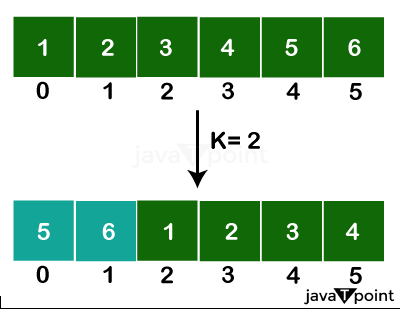Block Swap Algorithm for Array Rotation in PythonRotating the elements in an array by a given number of positions is an ordinary array operation. The naive way to turn an array is to pop each piece and insert it at the rotated position. However, this requires O(n) swap operations where n is the array length. For large arrays, this is inefficient. An optimized technique is the block swap algorithm. In this algorithm, the array is divided into blocks, which are swapped as a unit. By swapping contiguous blocks of elements instead of individual components, swap operations can be significantly reduced. The block swap algorithm utilizes the fact that swapping elements by any multiple of the array length results in the original array. It calculates the greatest common divisor (GCD) of n and r and divides the array into gcd(n,r) blocks. By swapping each block by 1 position gcd(n,r) times, the net result shifts all elements by r positions. In this article, we will look at how the block swap algorithm works in detail. We will go through the algorithm steps and implement a Python function to rotate an array using the block swap technique. 
Approach 1: Iterative ApproachRotating the elements of an array by a given number of positions is an ordinary operation. The naive method of rotating by popping each element and inserting it at the new position requires O(n) swap operations for an array of size n. This can be inefficient for large arrays. An optimized technique is the block swap algorithm, which divides the array into blocks and swaps the blocks as a unit. By swapping blocks of elements instead of individual components, the algorithm reduces the number of operations needed. The block swap algorithm works as follows:
This way, the algorithm distributes the swap operations by dividing them into blocks and swapping equal chunks simultaneously. Python ImplementationOutput: Original Array: 1 2 3 4 5 6 7 Array after rotating by 2 positions: 3 4 5 6 7 1 2 Explanation
In summary:
So, the blocks are swapped efficiently by dividing the array into two and swapping equal chunks. Approach 2: Recursive ApproachThe block swap algorithm rotates an array by dividing it into blocks and swapping them. This minimizes the number of swap operations needed compared to rotating elements individually. An iterative approach was discussed earlier, where the array is split into two blocks, which are swapped in a loop till the blocks are equal in size. However, recursion provides an alternative formulation to implement the same optimized swapping of blocks. In recursion, a function calls itself to solve more minor instances of the same problem. For array rotation, we can recursively divide the array into smaller blocks, rotate those blocks, and swap the elements to achieve the process. The recursive approach works as follows:
Recursion provides an elegant way to break the problem into smaller subproblems and build the solution bottoms-up. No additional memory is needed as the function stack is used for the recursion. The time complexity remains O(n). We will look at the recursive implementation in detail next. Output: Original Array: 1 2 3 4 5 6 7 Array after rotating by 2 positions: 3 6 4 5 7 1 2 Explanation
ConclusionThe block swap algorithm provides an efficient way to rotate an array by dividing it into blocks and swapping iteratively. This distributes the swap operations evenly by switching equal-sized chunks at a time. The algorithm reduces the number of swaps from O(n) to O(n/gcd), which can significantly improve large arrays. In this article, we looked at the detailed working of the iterative block swap approach. The algorithm was implemented in Python by dividing the array into two blocks and swapping the smaller block each time in a loop. This minimizes the number of swap operations while still retaining a linear time complexity. The block swap technique can be applied to rotate arrays in various applications efficiently. |
 For Videos Join Our Youtube Channel: Join Now
For Videos Join Our Youtube Channel: Join Now
Feedback
- Send your Feedback to [email protected]
Help Others, Please Share









